So, Google decided to pull the plug on Google Optimize—yep, it’s gone after September 30, 2023. Like when your preferred café closes without notice. You are running tests one day; the next… puff. Hey, not necessary to start crying. If you choose the correct A/B testing tool, moving to one is not as frightening as it seems. Though tools like Optimizely and VWO are excellent, have you looked at Plerdy? It’s like that friend who shows up whenever you most need him. Smooth migration, real-time data, and no problems help you maximize faster than you could say “conversion,” Plerdy’s A/B Testing Tool keeps your site trials running flawlessly. Sign me up!
What Was Google Optimize?
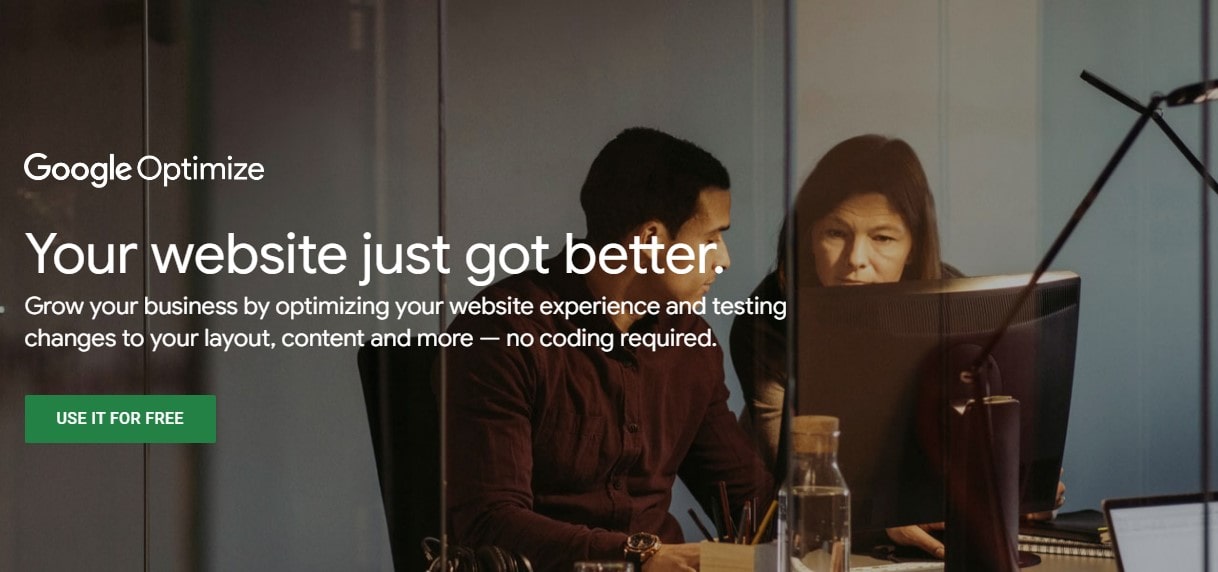
That free tool from Google that let you run multivariate tests, A/B experiments, and even personalize content for individual users was Google Optimize. Right, very great for a freebie. It enabled companies to determine, without conjecture, which website modifications would be most effective. You might try different layouts, switch button colors, or test two headlines to find out which really drew more people. And the best thing is that. With Google Analytics, it went without a hitch, hence you were spared juggling several systems. Your test results showed straight inside Analytics. handy!
Small and medium-sized companies particularly enjoyed it. Tools like Optimizely or VWO can grow expensive; not everyone has a large budget. For someone just beginning with website optimization, Google Optimize was a lifeline. Not sophisticated coding knowledge either—drag, drop, and you’re ready to go. You could also start quick experiments, saving time and trouble.
To be really honest, though, it wasn’t flawless. You could only execute one experiment at time, and several sophisticated capabilities were absent until you upgraded to Optimize 360. Still, it pounded above its weight for a free tool. It makes sense why people were shocked when Google declared it was closing operations.
Why and When Did Google Optimize Shut Down?
September 30, 2023 saw Google turn off Google Optimize. Yep, that’s the day many marketers had to say goodbye to a technology they relied on. Why was Google acting in this manner? Simple response: they recognized Optimize lacked the sophisticated tools users required and wanted to concentrate on third-party connections. Sounds rough, but many others might have seen it approaching. Late-century rumors of the shutdown began to circulate once more. People originally thought it was merely rumor… however by January 2023 Google declared it official. Not everyone was happy either; some users felt their go-to tool was taken away without sufficient time to get ready.
The key problem is Google Optimize lags behind rivals. More solid features, faster updates, and improved support were being provided by tools as Optimizely and VWO. They also chose to invest in improved integrations with outside A/B testing systems instead of upgrading Optimize as Google pushed customers onto GA4. Google claims that the idea was to establish GA4 as a center where one could interact with other tools—there was no need for internally developed solutions lagging behind.
Individuals responded differently. A few companies dismissed it and sailed early. Others, like those last-minute Black Friday shoppers, tried to find substitutes as the deadline drew near. Plerdy‘s swift migrations and easy-to-use configurations helped it to become popular quickly. Businesses who put off too long? Moving their research and data before the shutdown caused some difficulties, though.
Was it shocking? Indeed for some. For some, it was simply Google cleaning house, guiding everyone toward its new glossy GA4 toy. In either case, marketers had to change—or risk flying blind without doing tests.
How the Google Optimize Sunset Affects Businesses
Data Access and Experimentation Impact
Losing access to Google Optimize wasn’t just a “click and done” affair. Companies using it had to scramble to export their trial data by September 30, 2023. Lost it? Well… That data has vanished. There are neither second chances or backups. For businesses doing several dozen tests, that’s like shredding months of effort. Now, teams need to rewrite their testing strategies from start. One cannot simply copy-paste into a new tool. Rebuilding tests on sites like Plerdy or Optimizely takes time; if you neglected early preparation, you will find yourself caught trying it on demand.
Operational and Financial Implications
Changing tools is not cheap—or quick. Companies depending on Google Optimize, particularly smaller ones, now had unanticipated expenses. New technologies like VWO, AB Tasty, or Plerdy offer diverse pricing structures, and some start at $200 per month. Not precisely pocket change with limited means. It’s also not only purchasing the instrument. You have to establish up integrations, coach your staff, and handle migratory issues. One firm I spoke with paid more than $5,000 just for data transfers and onboarding.
Then comes the downtime. Companies that acted slowly faced weeks or months without running tests. Lack of data means lack of optimization, which might reduce conversion rates. Imagine starting a fresh landing page without testing… dangerous, then right? Delays of that kind might result in lost income, particularly for e-commerce companies during busiest sales seasons. Early tool investments in Plerdy not only save time but also maintain your experiments running without stopping.
Top 5 Alternatives to Google Optimize
1. Plerdy A/B Testing Tool
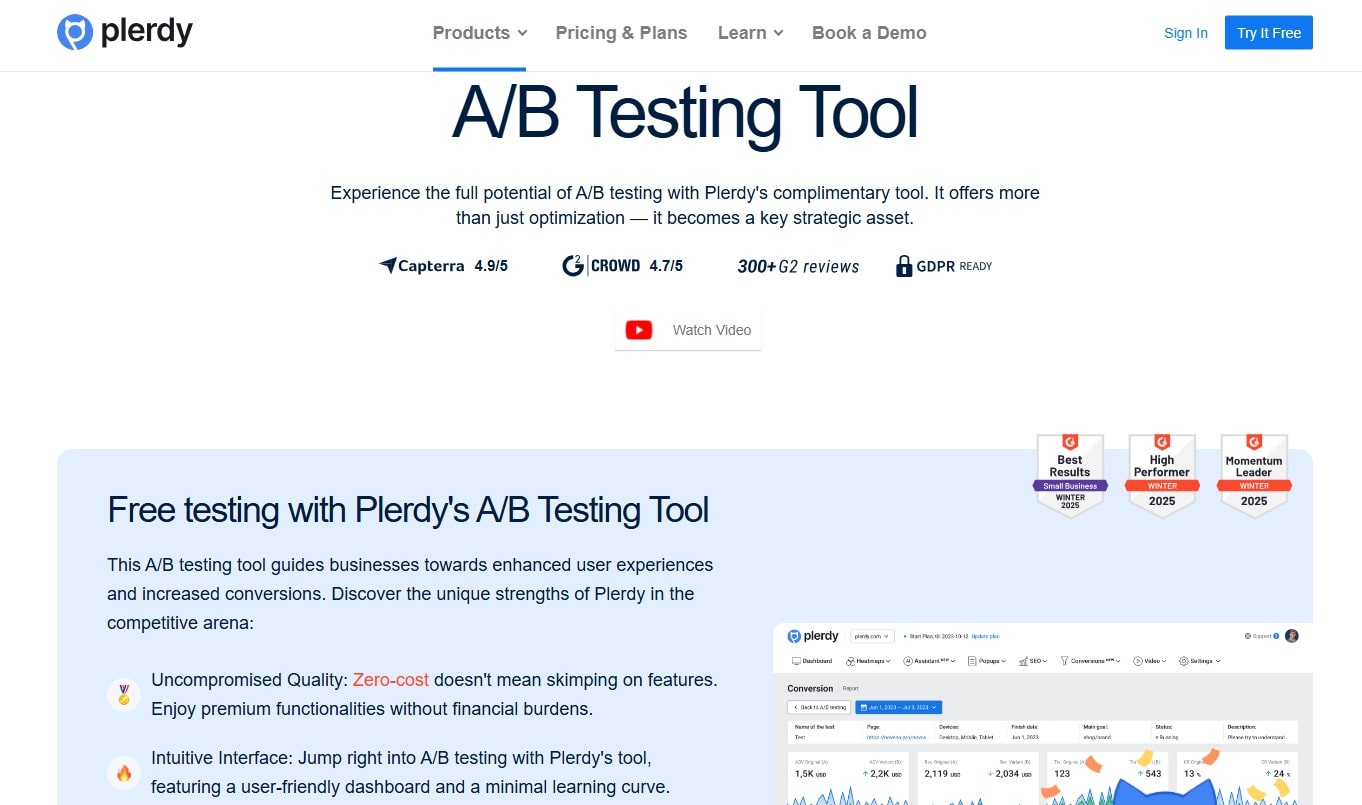
Plerdy’s has your back if you’re looking for an free A/B testing tool without having you rip your hair out. It has so many tools that improving your website is easy. tracking in real time? Indeed, you see outcomes as they occur—no waiting hours to find out if your new CTA button color works better. The front-end? really user-friendly. Launch a test without Googling how to accomplish it even if you’re not a tech whiz. Plerdy’s sophisticated segmentation also allows you to focus on particular markets. Want to know how updates to your homepage appeal to fresh Facebook visitors? Corrected.
Migration was one of the most difficult tasks with changing technologies following the sunset of Google Optimize. Plerdy excels at that. It connects effortlessly with systems for analytics like Google Analytics 4. Saving time and your sanity means not having to copy-paste data everywhere or juggle tabs. Plerdy sets up in minutes rather than days. For companies trying to keep their experimenting active, that speed counts.
And let us also discuss assistance. Ever emailed a support ticket and waited a week for a reply? Not in Plerdy. Their staff is not only providing links to FAQs but also responsive and really helpful. Customizable templates on the platform also help to prevent beginning from scratch each time. Would want to try fresh pricing schemes, pictures, or headlines? You will find a template that gets you half way there.
The money component comes first now. Plerdy is reasonably priced. While some products charge you a fortune—we’re looking at you, enterprise-level platforms—Plerdy provides adjustable pricing. Small businesses don’t have to break the bank; bigger businesses can expand as they do.
Usage in the real world I tested their product page style for an e-commerce store I handled using Plerdy. Following a two-week A/B test, conversions rose by eighteen percent. That’s actual income, not simply figures that seem good. Still another client changed the location of their newsletter sign-up form. Their sign-up rise within days was 25% thanks to Plerdy’s fast setup.
In essence: Plerdy’s value every dollar if you need a dependable, simple, reasonably priced tool that doesn’t make experimenting a chore. It maintains your data clean, your testing seamless, and your website running as it should.
2. Optimizely A/B Testing
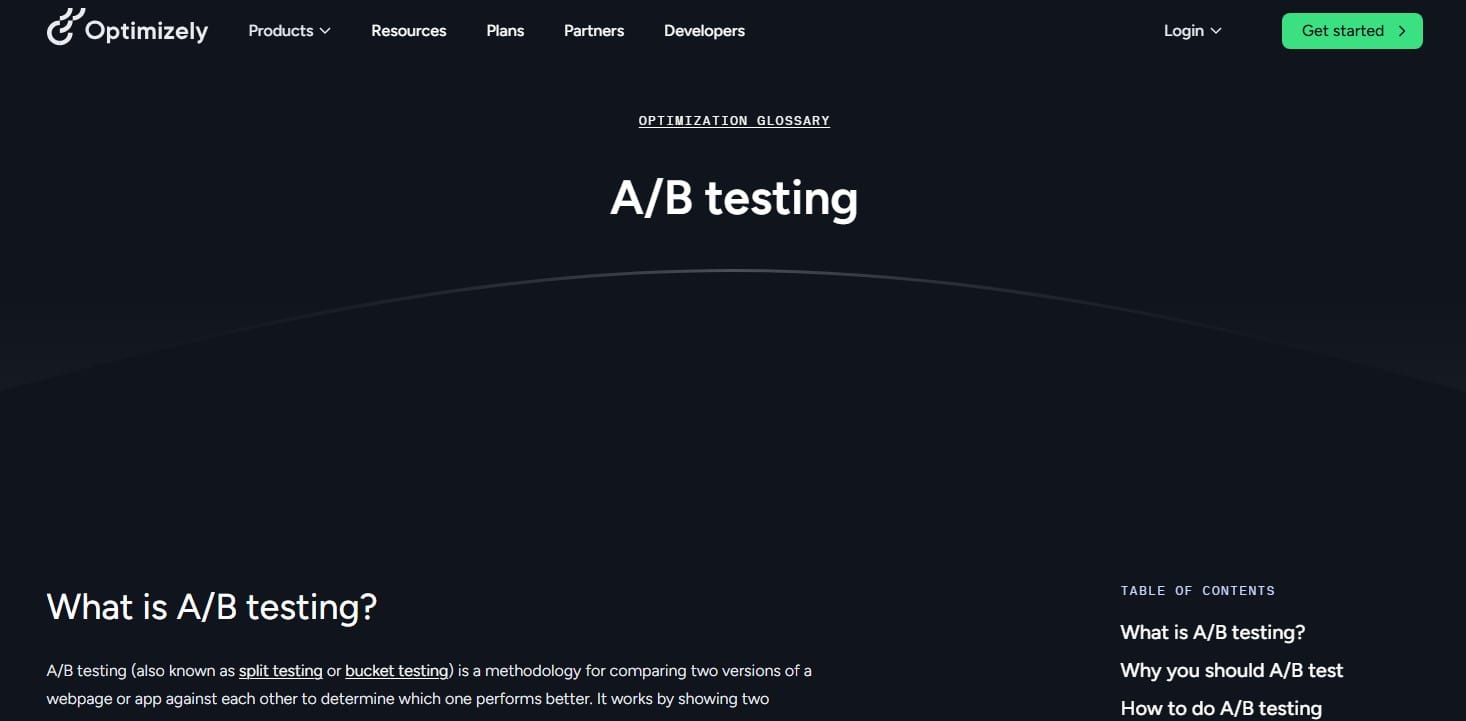
Optimizely is more like the Swiss Army knife of A/B testing for large corporations than it is a tool. This one’s got your back if you require something strong and work in an entrepreneurial surroundings. The platform emphasizes significant features including audience targeting, multipage testing, and super-detailed reporting. Want to confirm that your checkout page matches a new homepage? manages that in an optimal way. You can target consumers depending on device, region, or behavior; hence, you are covered if your campaign is only for New York iPhone users.
Integrating with Google Analytics 4 (GA4) goes easily. Optimizely speaks directly to GA4, thereby saving time by aggregating data in one location from many platforms. That saves hours, particularly in cases of rapid response requirements. Their reporting dashboard is not so intricate that you need a PhD to grasp it, but it is sufficiently detailed to make data nerds smile.
But let us discuss money first. Optimiseally is not cheap. Starting in the thousands annually, pricing could frighten small companies. Still, companies usually view it as a reasonable investment. Businesses like as Microsoft and eBay use it to maximize at scale since every percentage point counts when you are handling millions of consumers. Indeed, it costs more, but for companies requiring sophisticated capabilities, the price tag has great value.
3. VWO A/B Testing
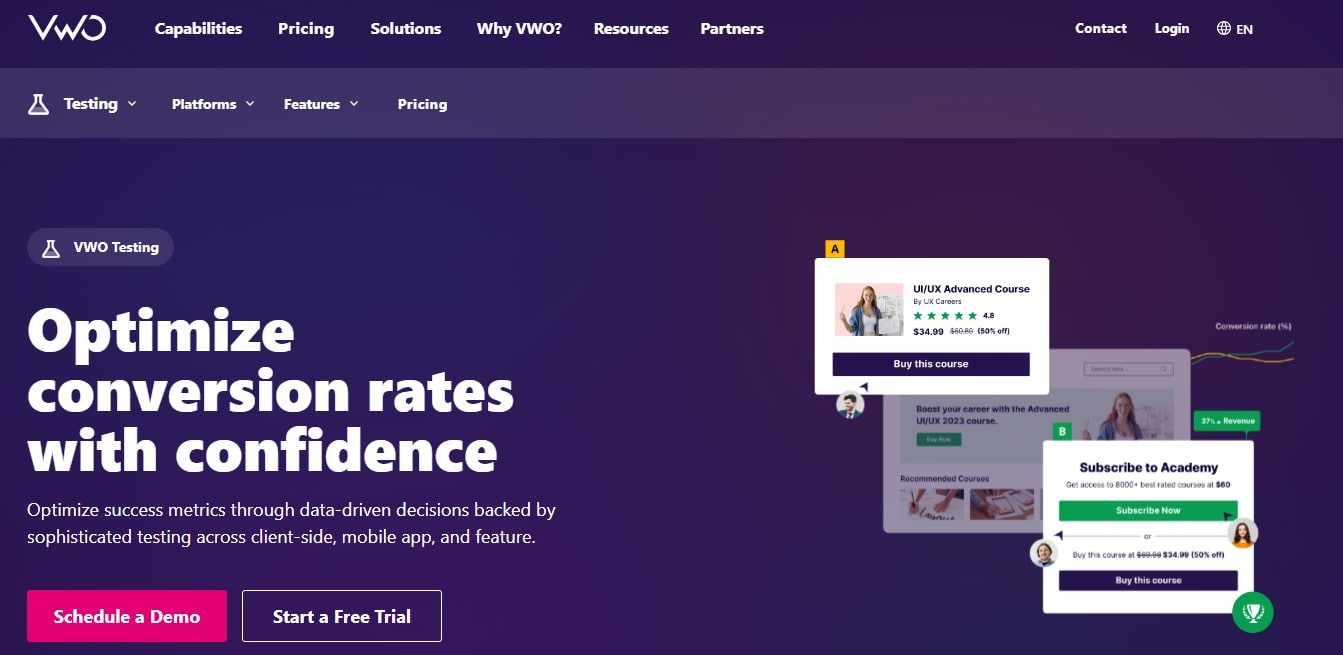
One of those tools that helps A/B testing feel more like, “Hey, I got this” rather than like rocket science is VWO. Guess what? They have a free plan available. Yes, you don’t have to empty your wallet to run some tests. That’s a great offer for small to medium companies striving to maximize websites without large expenses.
For what reason is VWO unique? The analytical firstly are on target. You receive straightforward results that indicate which version of your site is winning instead of losing yourself in convoluted graphs. Plus, their heatmaps are like a treasure map—showing exactly where users click or just scroll by. Handy, just right? If you’re interested in people’s opinions, the included built-in polls cover it. Furthermore, multivariate testing? VWO allows you to test numerous elements at once, therefore avoiding slow, one-change-at- a-time tests.
Setting it up calls for no tech wizard. I know companies created in less than an hour without frantic calls to coders. Based on statistics from VWO’s heat map, one e-commerce store I visited increased conversion rates by 20% just by switching a banner.
Basically, VWO provides if you want to increase user experience and sales without involving complex settings. Who also doesn’t enjoy testing smarter and saving money?
4. AB Tasty
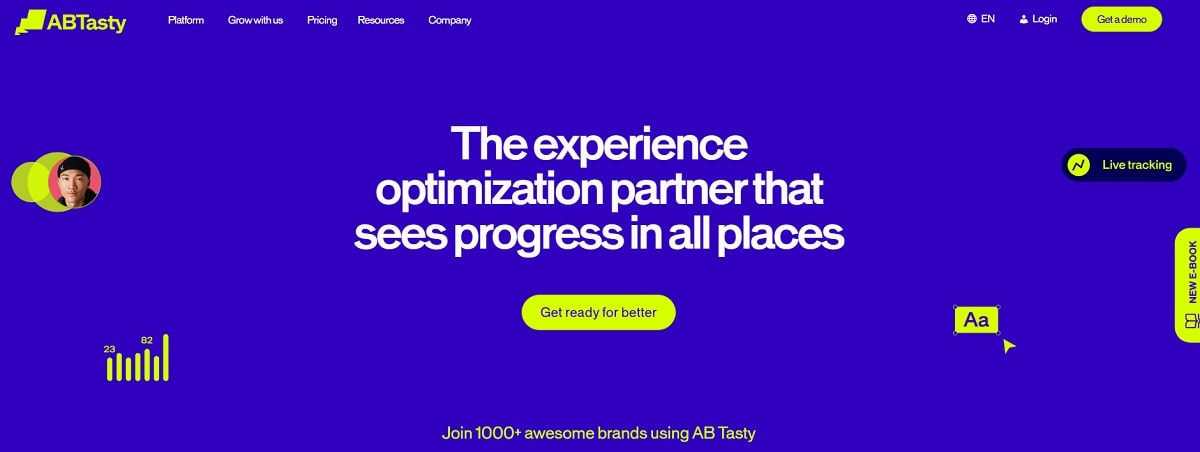
AB Tasty might be the flexible A/B testing tool you’re looking for that goes beyond split testing. It combines reliable analytics, user behavior insights, and personalizing elements to enable companies of all kinds maximize their websites. The tool truly excels with its visual editor; setting up tests does not require a coding genius. To be honest, that is a relief as well.
Users value how AB Tasty strikes a mix between simplicity of use and power. You can explore multivariate tests, adjust tailored experiences for various audience segments, and even leverage machine-learning forecasts. It also easily connects with systems like Google Analytics and CRM tools to maintain free data flow.
Although pricing is set for mid-sized to large businesses, it is not the cheapest; yet, users report conversion increases of up to 30%. This speaks for itself. Customer service from AB Tasty is attentive, which is absolutely vital while in the middle of a test and things start to get complicated. This solution provides the ideal combination of capabilities and usability for brands trying to enhance customer journeys without unnecessarily complicated the process.
5. Kameleoon A/B Testing
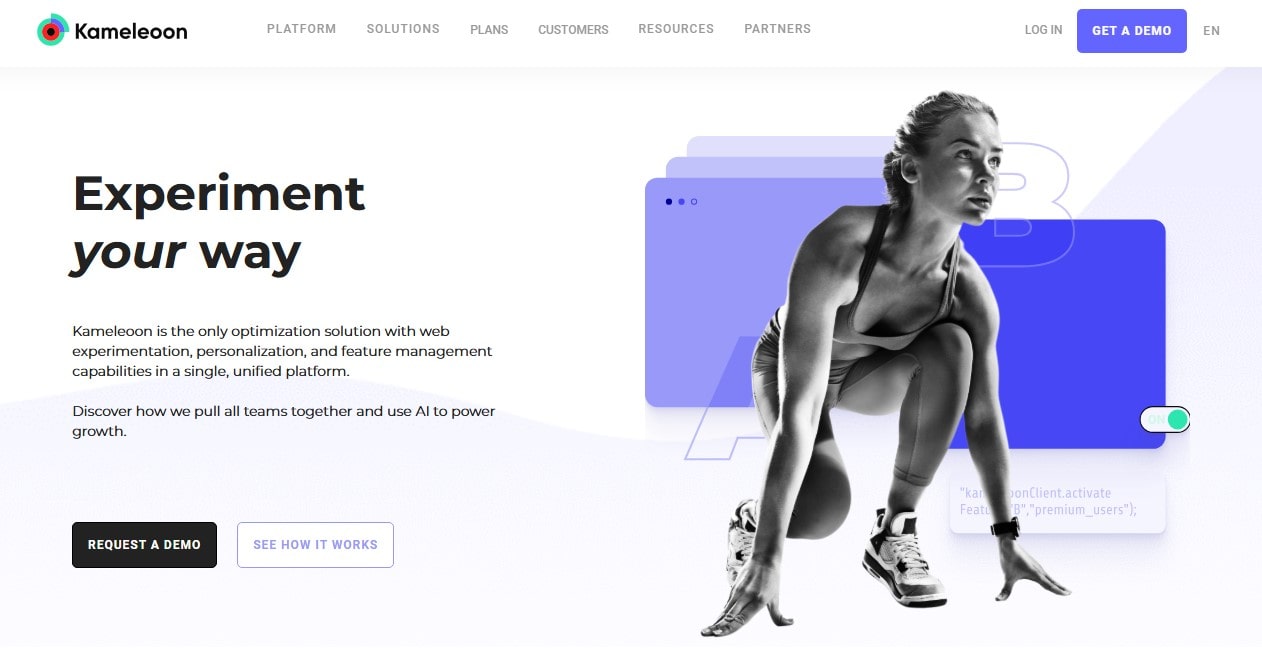
When you want your website to feel like it reads minds, Kameleoon is the instrument you turn to. Driven by machine learning, it forecasts next behavior of guests and dynamically adjusts the experience. Imagine someone ends up on your page and boom—the site displays just what they need. That is Kameleoon functioning behind the scenes; it is not magic.
Building this platform with mid-sized and large businesses in mind is guided. Companies who deal with thousands of daily visitors cannot afford slow tools or guessing. Run A/B tests, multivariate testing, and gain insights that really enable you to maximize quickly using Kameleoon. Apparently utilizing predictive targeting, one retail behemoth increased conversion by 20%. Not horrible for a few clicks, then?
Here also is another major concern: security. Kameleoon takes data security very seriously—no short cuts. Businesses in the financial or healthcare sectors enjoy it for that. And unity? as butter, smooth. Without causing you problems, it operates with Google Analytics, Salesforce, and many more systems.
Kameleoon’s got your back if you’re looking for a solution that tests but also thinks for you. Though it sounds futuristic, using this technique user behavior is already being predicted.
Key Considerations When Choosing an Alternative
Choosing the correct A/B test tool following the sunset of Google Optimize is more than just selecting the first choice you come across. Your decision may either empty your budget without yielding any benefits or improve the performance of your site. What then ought you to be considering? Two things: money and characteristics. Allow us to dissect them.
Features and Customization
Every company has goals and a certain atmosphere. While some value simple personalizing, others demand extensive insights including user segmentation. If your staff enjoys data, use a technology providing advanced targeting and real-time analytics. For companies hoping for more intelligent judgments, Kameleoon, for instance, employs machine learning to forecast user behavior. If you’re looking for rapid wins, Plerdy’s customized templates enable you start tests right away. Not every platform provides heatmaps or session records; so, pick what will assist your company expand, not only what looks good. Features should complement, not complicate your approach.
Budget and Scalability
Budgets vary; startups cannot spend like Amazon, right? For those just starting, certain instruments—including VWO—have free plans. But as your company expands, you will need scalable answers. While smaller businesses stay around $200, large corporations may pay $1,000+ monthly for enterprise-level capabilities. Consider long-term costs; will the tool manage more traffic without further fees? One must give scalability first priority. Nobody likes to change tools six months in running. Plan ahead, then choose a tool that fits you and avoid being caught paying for capabilities you won’t need. Good ROI results from smart expenditure.
Finally
Time is running out; delaying will not help. Choosing the correct tool is not only a nice-to-have but also what maintains your tests running and conversions flowing when Google Optimize is gone. Delays could cost clicks, leads, and revenues. Plerdy stands out for this reason also. It’s fast to set up, reasonably priced, and loaded with features you will really need. With migration, no headaches either; it’s quick and seamless. Do you not want to rush last minute? Act aggressively. Make the change right now to keep your tests alive and keep optimizing without losing a pulse. Thank you; your business and future self will appreciate it!
